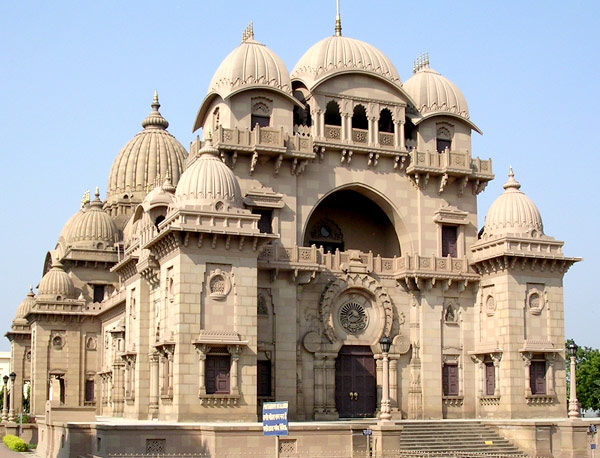Belur Math, Kolkata, India
Belur Math
Belur Math is the headquarters of the Ramakrishna Math and Mission, founded by Swami Vivekananda, the chief disciple of Ramakrishna Paramahansa. It is situated on the west bank of Hooghly River. It is one of the noteworthy establishments in Kolkata. This temple is the focus of the Ramakrishna Movement. The temple is prominent for its architecture that embraces Hindu, Christian and Islamic styles and stands as an icon of the unity of all religions.
Spread over 40 acres, on the bank of the Ganges, the temple complex also houses a museum and several affiliated educational institutions. Back in January 1897, Swami Vivekananda reached Colombo with some group members of Western believers. He was the founder of two monasteries, one of them at Belur, which became the headquarters of Ramakrishna Mission. The main activity of these monasteries was to accept and skill young men who would ultimately become messengers of the Ramakrishna Mission. The same year a benevolent activity was carried out to help people devastated by the famine in Bengal.
How to Reach Belur Math
Belur Maths is located in the Northern part of Howrah and is about 4 km from Howrah Railway Station. All the modes of transport are accessible from outside the Howrah railway station and bus stand. You can travel by auto, bus or taxi. From Howrah, you can take bus number 54 to reach Belur.
Local trains also go to Belur Math, however, it is more convenient to travel by bus, auto or taxi as they drop you off at the entrance to the Math. It takes around half an hour to reach there from the railway station or the bus stand.
Local trains also go to Belur Math, however, it is more convenient to travel by bus, auto or taxi as they drop you off at the entrance to the Math. It takes around half an hour to reach there from the railway station or the bus stand.
- Air:
- Rail:
- Road:
Architechture of Belur Math
The design of the temple was planned by Swami Vivekananda and architected by his brother Swami Vijnanananda, a monastic disciple of Ramakrishna. The mission of this temple is to "celebrate the diversity of Indian Religions", so its design is acquainted like a temple, a mosque and a church if seen from diverse positions.
The main entrance of the temple has a fascia influenced by Buddhist style. The structure over the entrance is similar to the Hindu temples of South India with their ornate towers. The windows and balconies inside the temple possess the Hindu and Mughal Islamic style of north India. The central ceiling is derived from European architecture. The ground is in shape of Christian cross.
The main entrance of the temple has a fascia influenced by Buddhist style. The structure over the entrance is similar to the Hindu temples of South India with their ornate towers. The windows and balconies inside the temple possess the Hindu and Mughal Islamic style of north India. The central ceiling is derived from European architecture. The ground is in shape of Christian cross.
Tips
Liquor is prohibited on the premises.
Time Required: 2 - 3 hours
Cost: Free
Open Time:
06:00 AM - 09:00 PM
